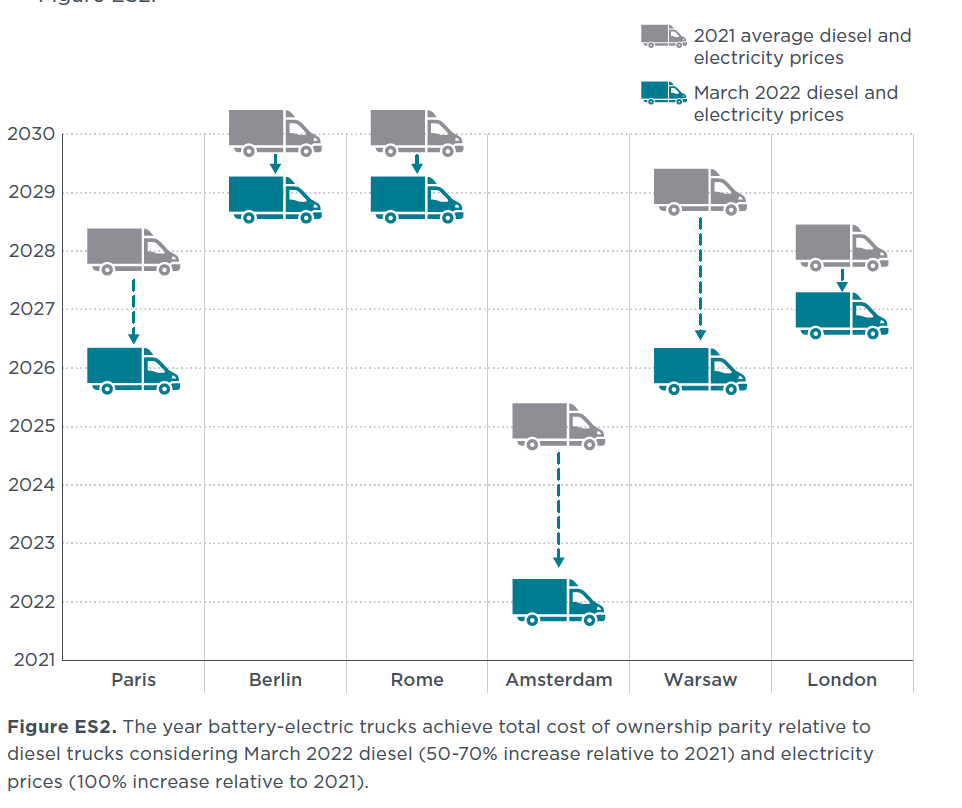Over the last two years, Europe’s increases in online shopping and delivery show no signs of waning. As a result, parcel delivery vehicles make up one of the most significant heavy-duty vehicle segments by volume in Europe, recording a market share of 11% in 2020. Fortunately, their predictable schedules and relatively short routes make last-mile delivery vehicles a prime candidate for electrification. Electric delivery trucks will soon be cheaper to use than diesel trucks.
The International Council on Clean Transportation and RAP break down the various vehicle costs for electric trucks, the energy and network expenses for charging them, and the availability of purchase premiums in six major European cities. In some scenarios, electric trucks will reach cost parity with diesel vehicles yet this year. However, parity is delayed until 2025 or even 2030 in some cities without the support of these premiums.

Based on this comprehensive analysis, the authors conclude that battery-electric trucks are economically viable today, given the current availability of purchase premiums. Other important aspects to consider when electrifying last-mile delivery fleets include choosing the appropriate battery size and reducing operational costs through smart charging vehicles.
Policymakers can advance the electrification of electric delivery trucks by:
- Implementing a national bonus-malus tax scheme to finance purchase incentives for zero-emission trucks.
- Imposing emissions charges on all diesel vehicles entering low- and zero-emission zones in city centers. An emissions charge of €2/day to €4/day for six days a week per diesel-powered heavy-duty vehicle can reduce the TCO gap, allowing battery-electric trucks to reach TCO parity before mid-decade.
- Deploying ‘smart’ charging infrastructure in urban logistics depots.
- Requiring the EU Member States to implement time-varying electricity and network tariffs to ensure affordability for logistics operators electrifying their fleets.
